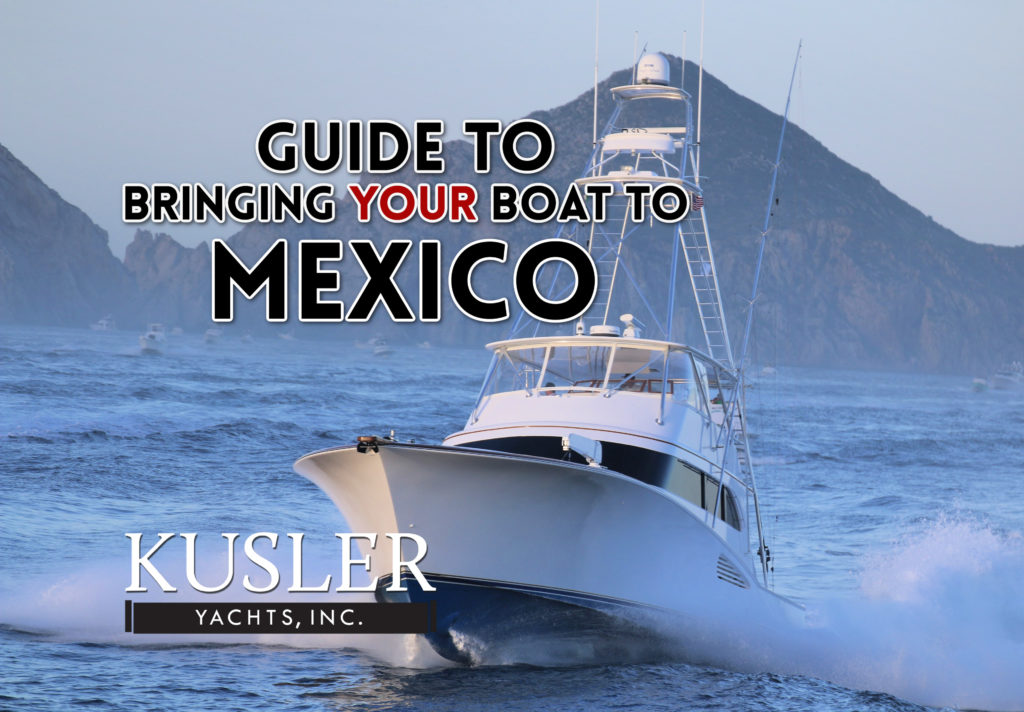
What follows is the Kusler Yachts’ Guide to Bringing Your Boat to Mexico.
For decades the Mexican Baja has allured West Coast boat owners in the United States. There are no better ways to enjoy Mexico’s incredible fishing, diving and lifestyle opportunities than on your own boat.
Before you can fish Mag Bay or enjoy a week in La Paz, you must first clear customs and physically get your boat from the US to your destination. This is a daunting prospect for many. It doesn’t have to be.
Please note: The guidelines for bringing your boat into Mexico are subject to change—and do so frequently. Before packing up and heading for the border check the latest regulations.
Confidence in the Process
Perhaps the first and most important part of the process of bringing your boat to Mexico is being confident that you can make it happen safely. After all, if you spend the whole lead up to the trip worrying about the safety and welfare of your floating investment, you are not likely to have much fun.
Every year hundreds or even thousands of vessels make the trip from California to Mexico. Most of them do so without incident.
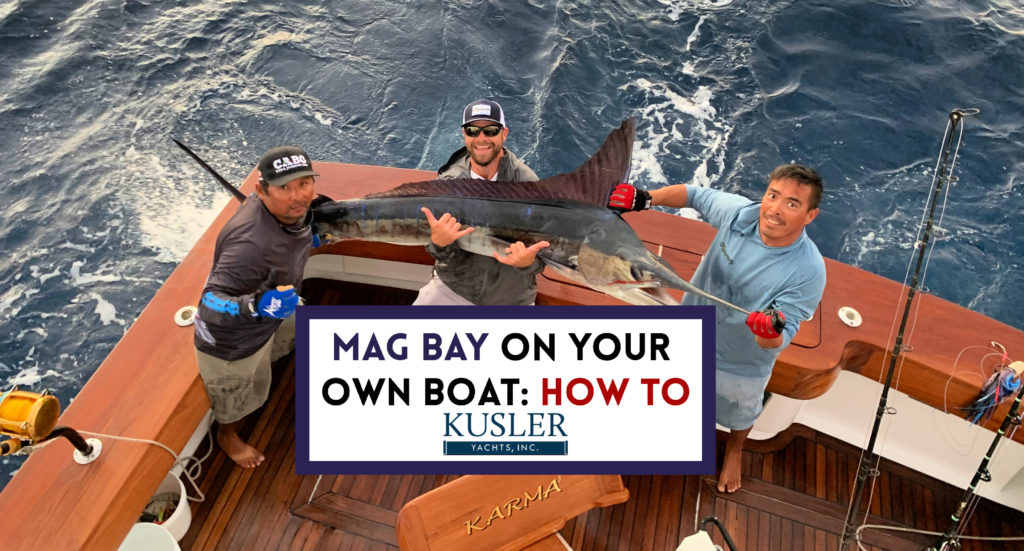
The Kusler Yachts Guide to Mag Bay on your own boat provides some expert tips on enjoying one of the world’s greatest fisheries.
These days the process of registering your trip and clearing customs is streamlined and easy. Boating technology has come a long way and there is a network of marinas, anchorages and fuel stops to make the journey easy. Gone are the days of strapping 10 55-gallon barrels of diesel in the cockpit and setting out into the unknown.
If you have never made the trip before—or have never done so one your own boat—there are a number of sources of information. Hiring a delivery captain or crewman or inviting an experienced friend along for the ride can not only help with the trip, but provide peace of mind.
Delivery Captains and Crew
Having an experienced crew who has done the journey before can help guide you through the process. The benefits extend to not just the customs process, but also knowing the best places to stay on the trip and what marina and harbor entrances look like—and which areas to avoid upon entering and departing. Depending on how far you plan to cruise between stops, the extra eyeballs can help on night watches or taking turns at the helm in the day as well.
Kusler Yachts has decades of experience delivery yachts to and from Mexico. This experience includes personal use, delivery for clients and taking boats to and from Los Cabos for tournament season.
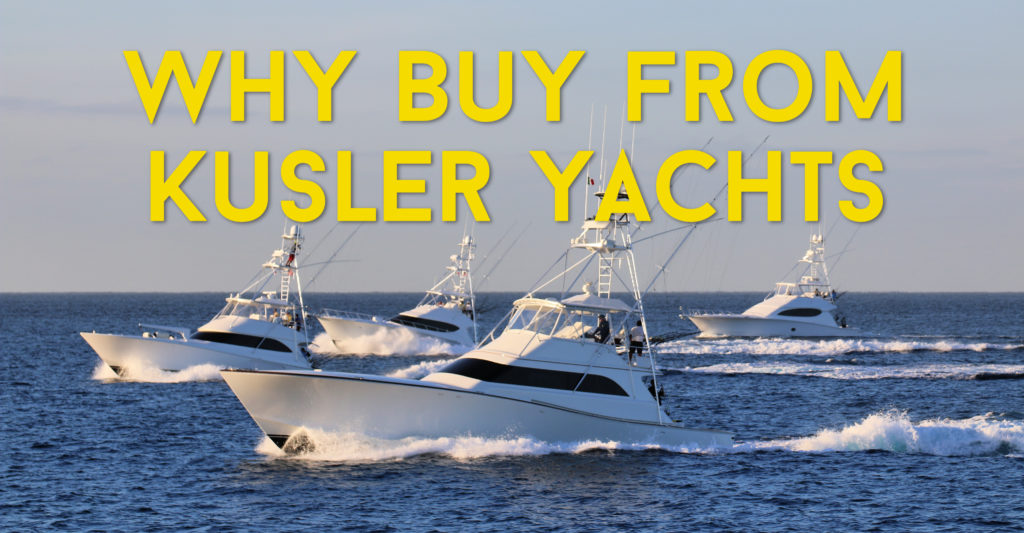
Why Buy from Kusler Yachts? We are transforming what you can expect from the brokerage experience.
All of Kusler Yachts’ brokers are experienced captains themselves. If you plan to buy a boat to bring to Mexico or to bring a boat that you already own down south, give Kusler Yachts a call. They can not only recommend a good, reliable delivery captain but provide some best practices and expert pointers for your trip.
Necessary Insurance Policies
You are required to carry liability insurance policies in Mexican waters. These policies are clearly outlined (described later) in the Mexican government’s boat entry requirements.
Depending on the type of insurance you have for your vessel, you can likely purchase the policy from the same agent you use currently. Scheduling a few extra minutes to talk through the process with the insurance agent will provide not only some added perspective, but confidence in the process.
Spare Parts
Nobody wants a mechanical issue to strand them in the middle of nowhere—let alone in an isolated stretch of the Baja. Packing a few strategic spare parts can make all the difference for a Mexico trip on your boat.
Fuel Filters:
Heading into Mexico means taking on fuel from a series of marinas. While fuel quality and availability has come a long way in past 10 years, you never know when you might run into a bad batch.
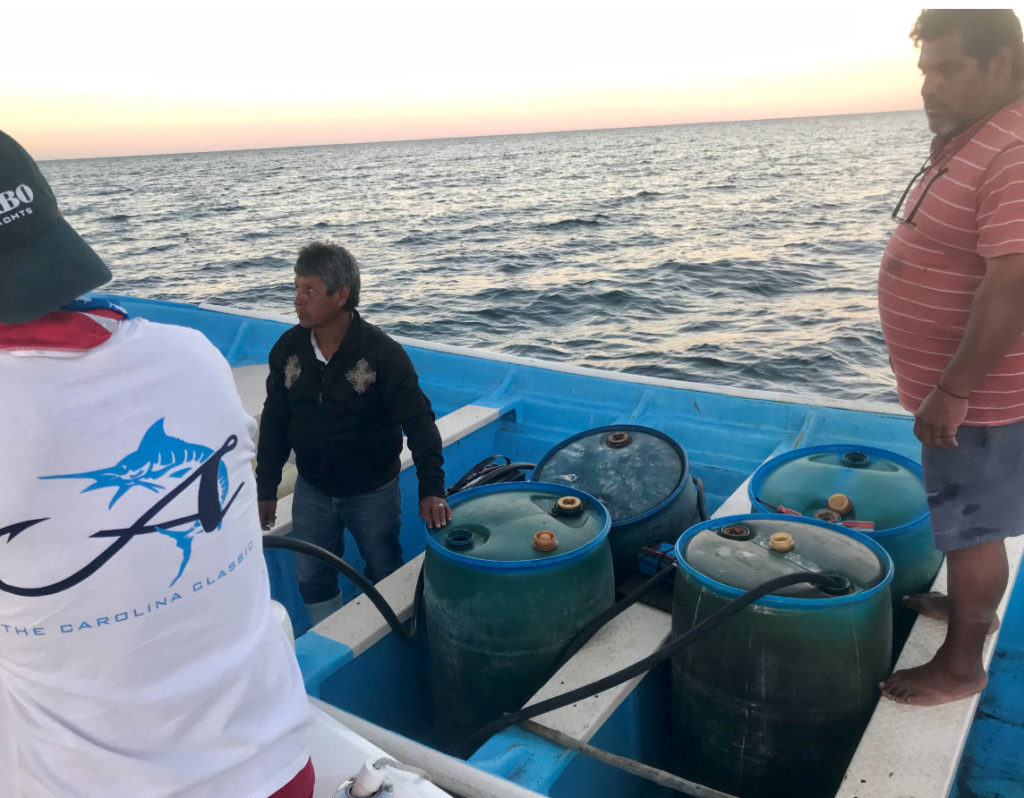
Fuel delivery– via panga– in Mag Bay.
Packing a few extra Racor filters can mean the difference between engine troubles and an uneventful journey. There is, after all, a reason that many high-end, traveling sportfishing operations come equipped with fuel polishing systems.
While you’re at it, it is probably a good idea to carry some extra engine oil and fluid needed for your boat systems. You can probably get these in Mexico, but its generally a good idea to carry some on hand in case you need them while in transit.
Hose Clamps and A Few Sections of Variable Sized Hose:
Bringing along some hose clamps and a few sections of hose of different diameter can allow you to fix a number of potential issues that might arise while traveling. From leaks in your motor, refrigeration or cooling systems, or problems with your water maker, a few sections of hose can be used to patch a variety of systems.
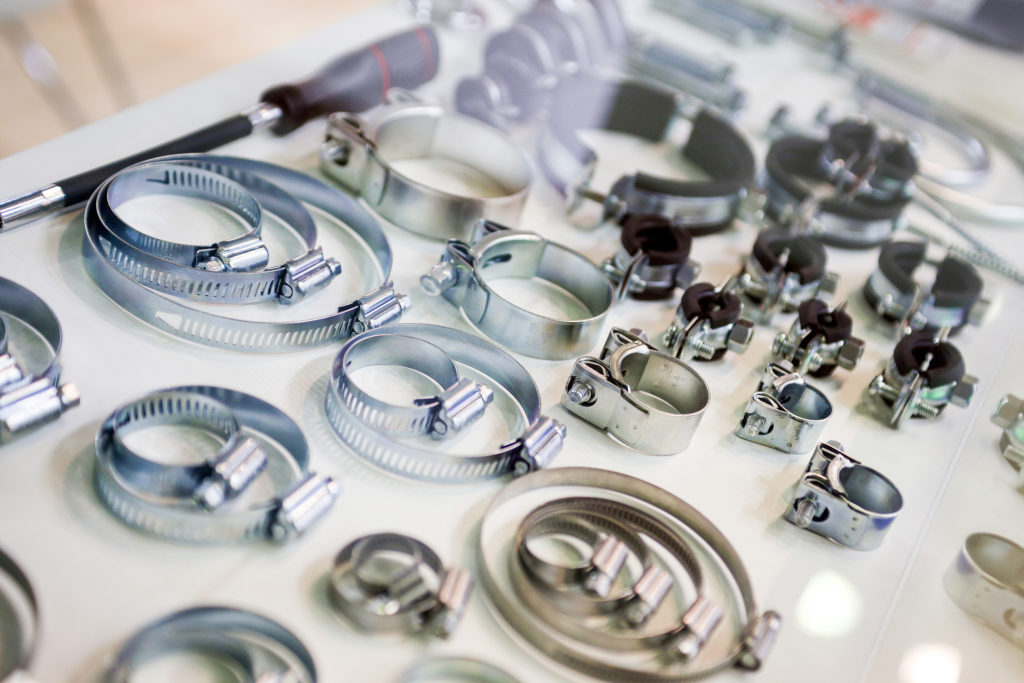
These can be used to get you to where you are going and buy time to get to a yard or service provider who can provide a permanent fix.
Sat Phone and List of Technicians:
Wi-Fi and phone service have come a long way recently. That said, you are always best to pack a satellite phone in case you need it. It is also a good idea to keep a contact list of technicians that you might need. A phone call to a trusted technician can help you work through boat troubles should they arrive.
Provisioning for Your Trip
Many of the Baja’s larger cities have super markets with everything you need. The Cost Co in Cabo San Lucas is as well provisioned as its counterparts in the states.
That said, there are a few items that might be easier to source in the States before you leave. These include steaks and specialty meat and cheeses and any type of the more “gourmet” items you’d like to consume on your trip.

As a general rule, the more time you plan to spend in remote areas (outside of Todos Santos, Cabo, or La Paz, etc.) the more you should bring with you. If you have any medical needs or special dietary requirements be sure to bring all of that with you as well.
Medical Preparedness
Speaking of medications, it always makes sense to give thought to being prepared for the worst case. Something as innocent as tripping when walking stepping onto the dock can result in an accident or injury.
D-Dey offers a variety of medical kits and training services for captains and boat owners. They sell a variety of medical kits for boats. D-Dey can even train you on defibrillators and the proper way to treat wounds. Emergency preparedness is a good consideration when bringing your boat to Mexico.
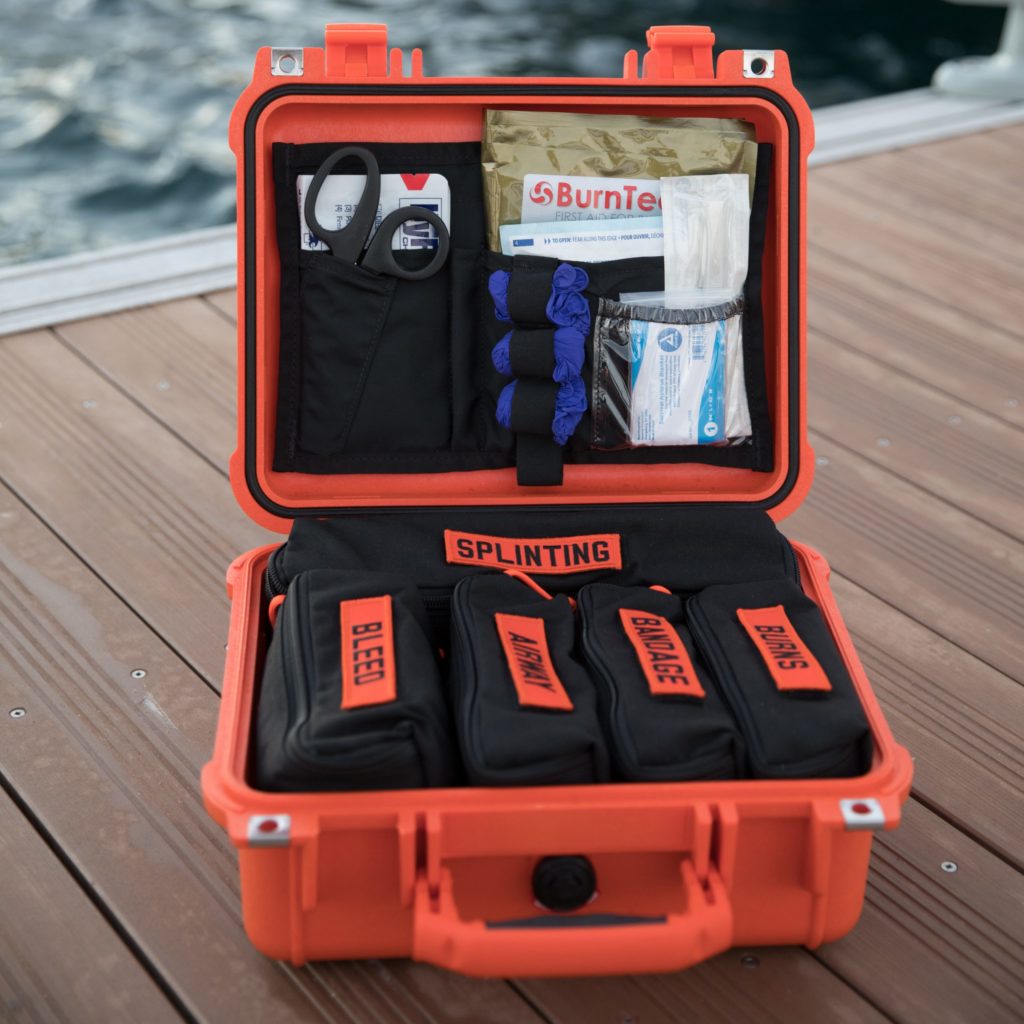
The company is gaining quite a bit of market share with East Coast boats and those traveling throughout Central America. Here is a link to their services: https://d-dey.com/
If you plan to have boat guests with health issues or who might be at higher risk than others, you might look into Global Rescue. This service offers field rescue, medical evacuation and telehealth coverage options for travelers.
Their rates are reasonable and provide peace of mind when on the water. In the event of an accident or health event (heart attack etc.), Global Rescue team members can talk you through how to treat the patient as they arrange for medical evacuation to nearest qualified medical facility.

A combination of physical preparedness—having the right hardware on board—and logistical planning—having the right coverage—can make all the difference if something goes wrong. Even if you never have to use either the medical kit or the medical evacuation services, you will likely sleep better knowing that you are prepared.
Logistics, Procedures and Requirements for Bringing Your boat to Mexico
It is now time to consider the requirements imposed by the Mexican government for entry into the country. Kusler Yachts’ broker Scott Veach is experienced and knowledgeable when it comes to this process.
Since regulations are subject to change, Scott recommends referring to the official websites for the latest. He sends all of his clients the “Visiting Mexico By Private Boat” brochure. This is published by the Mexican government and the Secretary of Tourism.
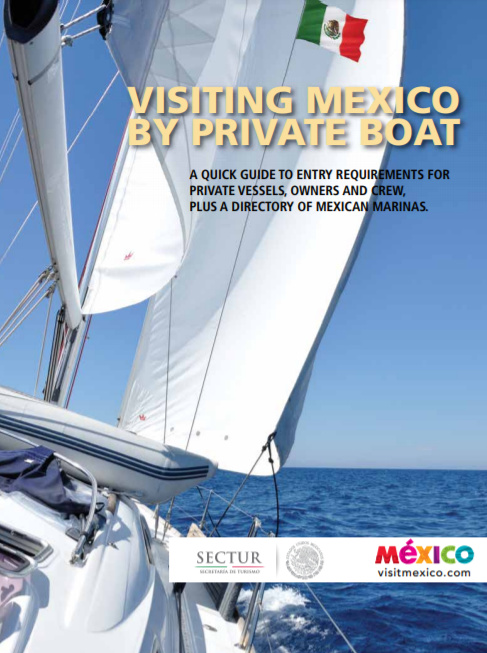
This guide is a comprehensive, easy to follow outline that provides everything you need to enter Mexico by private boat. It lists four steps.
1. Apply for entry and pay the necessary fees. You will need to provide state and federal vessel documentation information. Also required, the passport of the person responsible for the vessel and a fee of 306 pesos per visitor. Here is the site: https://www.banjercito.com.mx/registroEmbarques/
2. Download and complete a spreadsheet of vessel and passenger information. This form is available at: http://www.inm.gob.mx/index.php/page/instrucciones_para_pasajeros/en.html
3. Email the spreadsheet and copy of your receipt to Mexico’s National Immigration Institute (INAMI). This email address is: [email protected]
4. Await for the INAMI response to email that permits (or denies) entry into Mexican waters. This document should be kept on board at all times, along with a receipt of payment of necessary fees. The length of stay granted by this permission is not longer than 180 days. It may be used for one entry into Mexico—not for multiple entries.
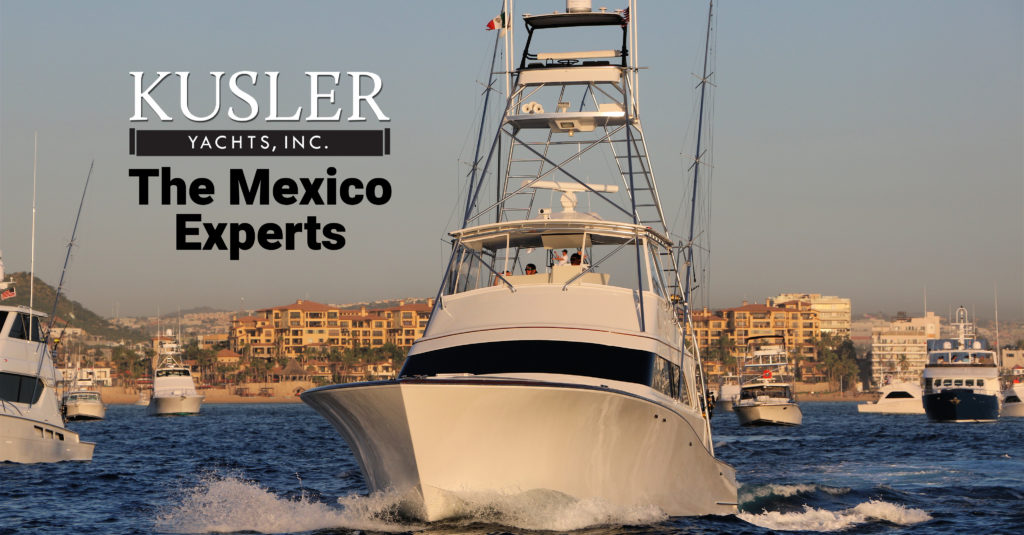
For more on the Kusler Yachts Mexico Experience, read this.
Other Considerations for Bringing Your Boat to Mexico:
The Mexican Government requires that each visiting vessel carry its original vessel documentation information. You must carry the original Temporary Import Permit or TIP document on board at all times as well. You’ll also need proof of payment of fees.
You must apply for the TIP within seven days of your entry into Mexico at: https://www.banjercito.com.mx/registroVehiculos/ or purchase it at your first port of entry.
If you carry fishing equipment on board the vessel, Mexico requires each person aboard to buy a fishing license. You can prepurchase licenses at: www.sportfishingmexico.com or obtain locally at marinas in the Baja.
All vessels that enter Mexico must clear with Customs at their first port of entry. The clearing process involves providing a crew list, showing proof of all of the required permits and documents.
All vessels in Mexican territorial waters will also have to show proof of the required liability insurance for the vessel. Your insurance provider is a good source for what exactly you need and the best policy for your situation.
Drugs, Weapons and Ammunition
Make sure that none of your guests or crew bring drugs, guns or ammunition into Mexico. If you have guns and ammo, double check the registration options that make them legal.